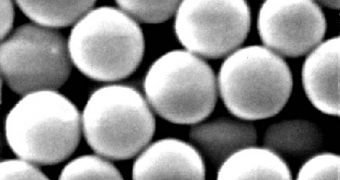In a groundbreaking course of treatment, which could see human trials starting within the next 18 to 24 months, researchers from the Lankenau Institute for Medical Research (LIMR) have managed to deliver suicide genes to ovarian cancer tumor cells via nanoparticles, essentially slowing the growth of the tumor. Details of the study are published in the latest issue of the journal Cancer Research, a paper edited by the American Association for Cancer Research.
At this point, the only viable course of treatment for ovarian tumors is surgery, followed by weeks of chemotherapy. However, these methods are only effective in the early stages. If the cancer relapses, and it most often does, there is little doctors can do for their patients. “This report is definitely a reason to hope. We now have a potential new therapy for the treatment of advanced ovarian cancer that has promise for targeting tumor cells and leaving healthy cells healthy,” LIMR professor and lead researcher of the new paper, Janet Sawicki, PhD, says.
During the experiments, the expert, with help from colleagues at the Massachusetts Institute of Technology (MIT), used cationic biodegradable beta-amino ester polymers as the nanoparticle vessel for the active ingredient, the DNA encoding diphtheria toxin suicide gene. The solution containing these elements was injected in unsuspecting mice, suffering from either primary or metastatic ovarian cancer tumors. The volume of the formations was measured both before and after the treatment.
The scientist learned that the solution was effective at stopping the growth of the tumors. While, on average, they increased two times from their initial volume, the growth was considerably reduced from the 4.1-fold to the 6-fold increase exhibited by mice in control groups. In other words, the new therapy is not effective at stopping growth, but it can slow it down to half, or even a third of its normal speed, which could give doctors time to try other options as well.
“In oncology we have been studying ways to kill tumors for a long time, but much of this has run up against the real estate principle of location, location, location. In other words, an effective therapy is not effective if it cannot get to the target. A real plus of a cancer therapy like this is not just the functionality of the nanoparticle construct molecule, but the ability to deliver the toxin to the tumor cells,” University of Maryland Greenebaum Cancer Center Associate Director for Clinical Research Edward Sausville, M.D., PhD, concludes. He is also an associate editor of Cancer Research.

 14 DAY TRIAL //
14 DAY TRIAL //